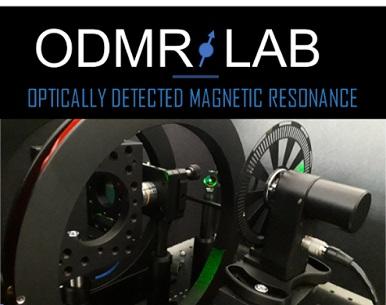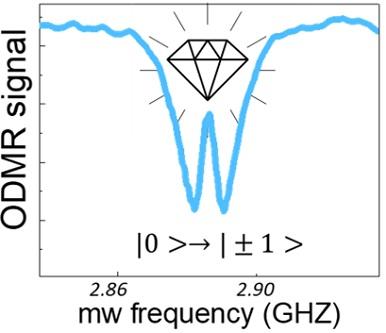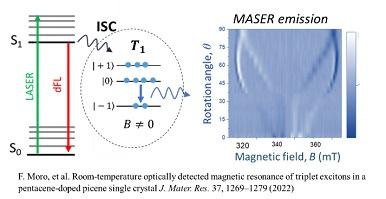Laboratory of Optically Detected Magnetic Resonance Spectroscopy

The research activities focus on Optically Detected Magnetic Resonance (ODMR) technique for the study of electron spin originating from defects and impurities in optically active materials with potential applications in quantum technologies such as room-temperature spin driven opto-electronics, quantum sensing and microwave amplification by stimulated emission of radiation (MASER).
Quantum sensing with electron spins

Electron spins from defects and impurities in optically active materials hold the potential for quantum sensing of physical quantities such as electric and magnetic fields, PH and temperature. Nitrogen vacancy (NV) centres in diamond are the most promising quantum sensors because of their great stability and sensitivity, long spin coherence time and large ODMR contrast at room temperature. As currently, new solid state quantum sensors are discovered, the nature of the defects and impurities remains largely unknown. We investigate the nature and magneto-optical properties of the electron spin colour centers in novel low dimensional 2D and 0D semiconducting materials by ODMR. Furthermore, the exceptional quantum sensing properties of NV centers in diamond are combined with ODMR spectroscopy to characterize spin defects and magnetic properties of novel 2D materials and explore their potential applications in spintronics.
Room temperature MASER Emission from Spin Centres

The recent discovery of room-temperature MASER in NV centers in diamond has sparked the research for their applications in a new generation of microwave devices in medicine, security, sensing and quantum technologies as well as for the understanding of fundamental physical phenomena. We investigate diamond crystals implanted with NV centers under different conditions as well as triplet states in carbon-based magnetic semiconductors by ODMR spectroscopy. The studies involve the understanding and optimization of the mechanisms and of the key properties responsible for the microwave emission such as magnetic energy levels, electron spin coherence time, spin-lattice relaxation time, intersystem crossing, crystal symmetry and orientation. Furthermore, the energy transfer from host crystal to guest impurities for microwave emission is investigated with the aim to decrease the threshold of the optical pumping and achieve the masing effect under low power laser excitation. These studies provide insights on the designing routes for efficient MASER emission.
Research Group
Prof. Fabrizio Moro
Research Lab
Optical Detected Magnetic Resonance Laboratory - Building U5, ground floor, room T074